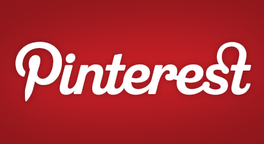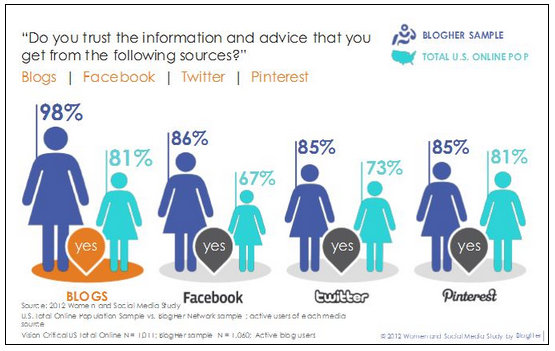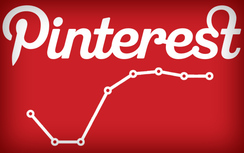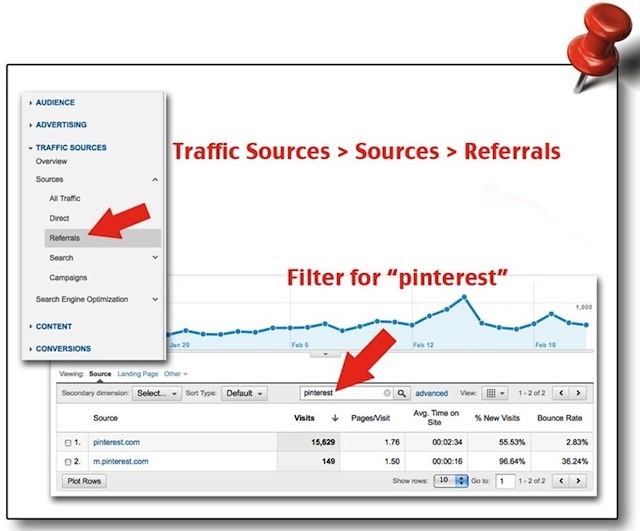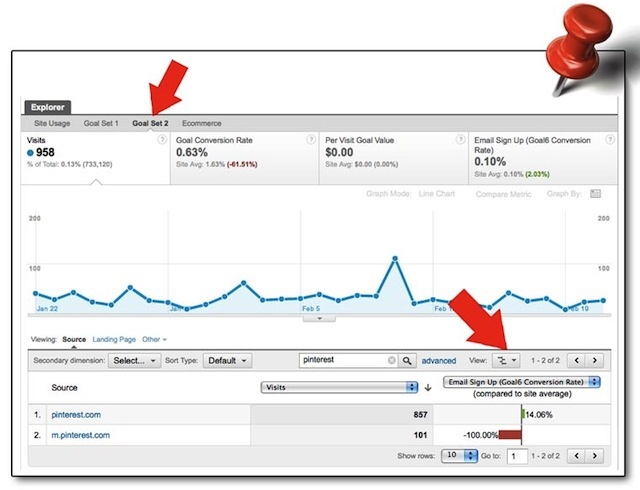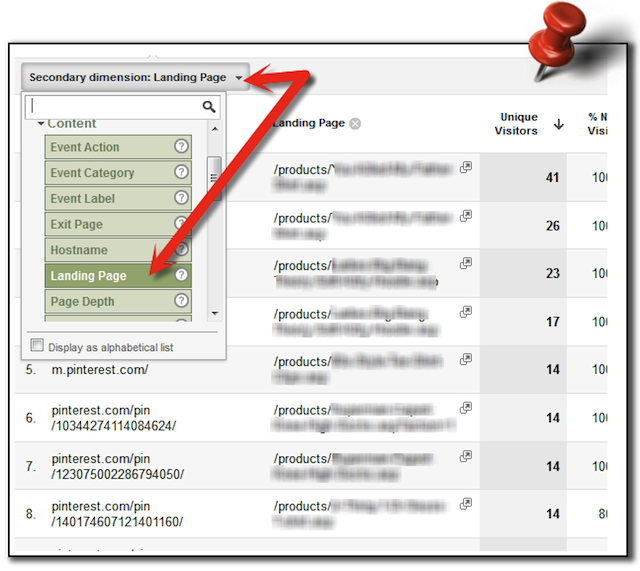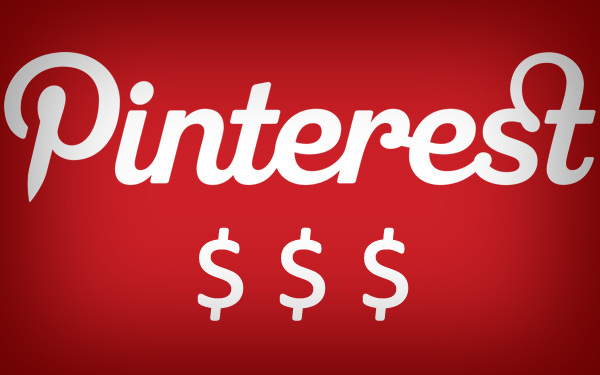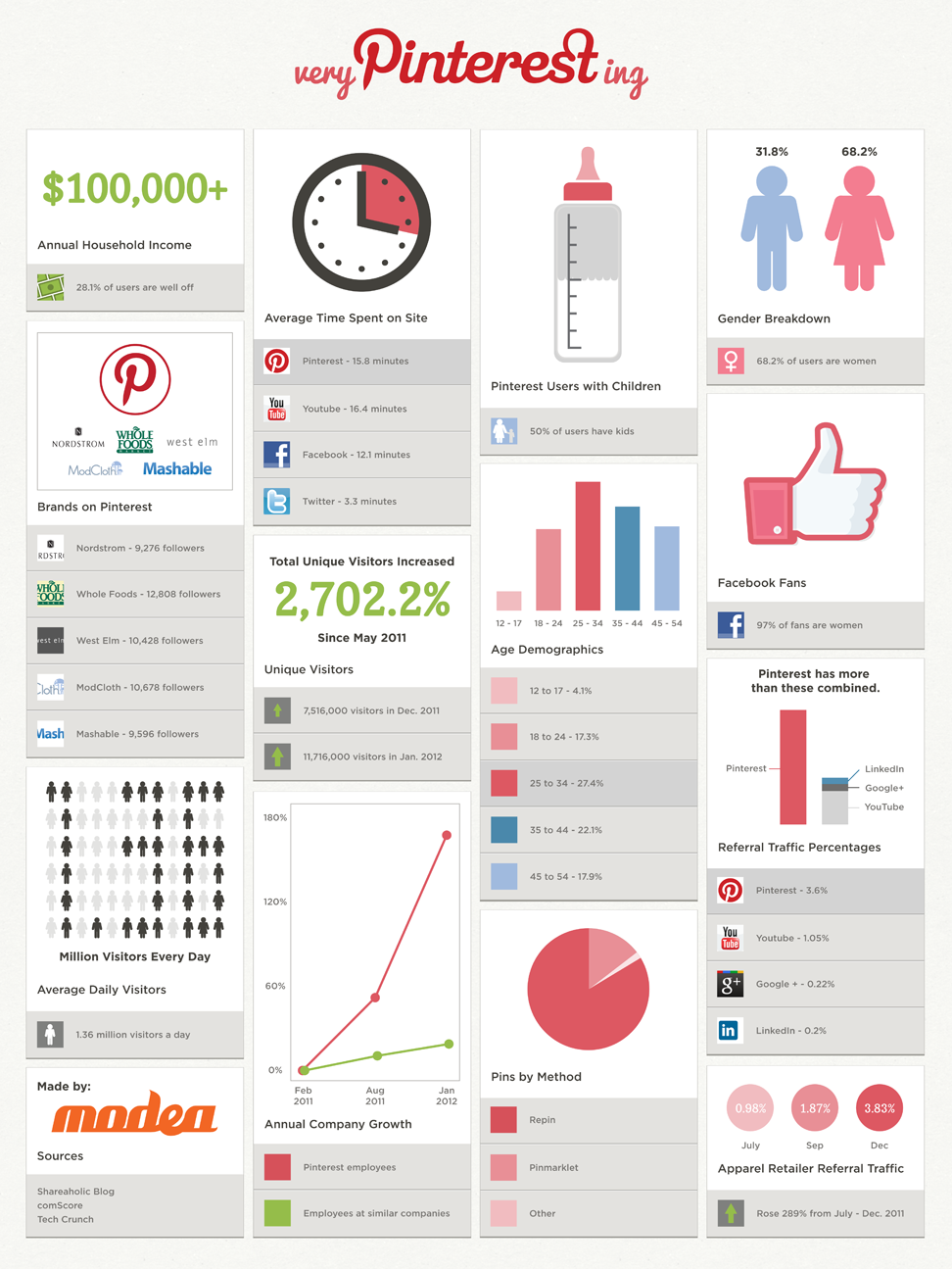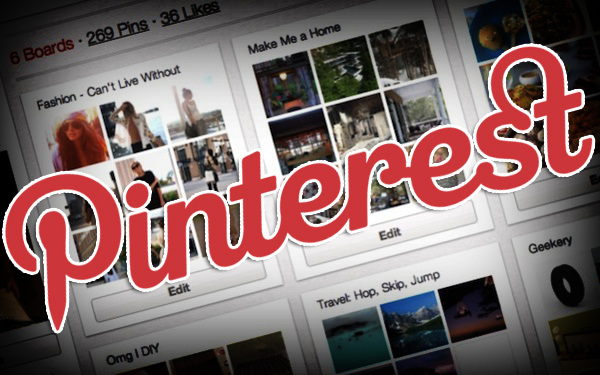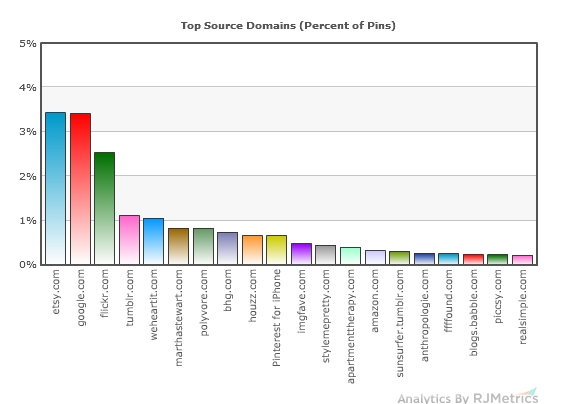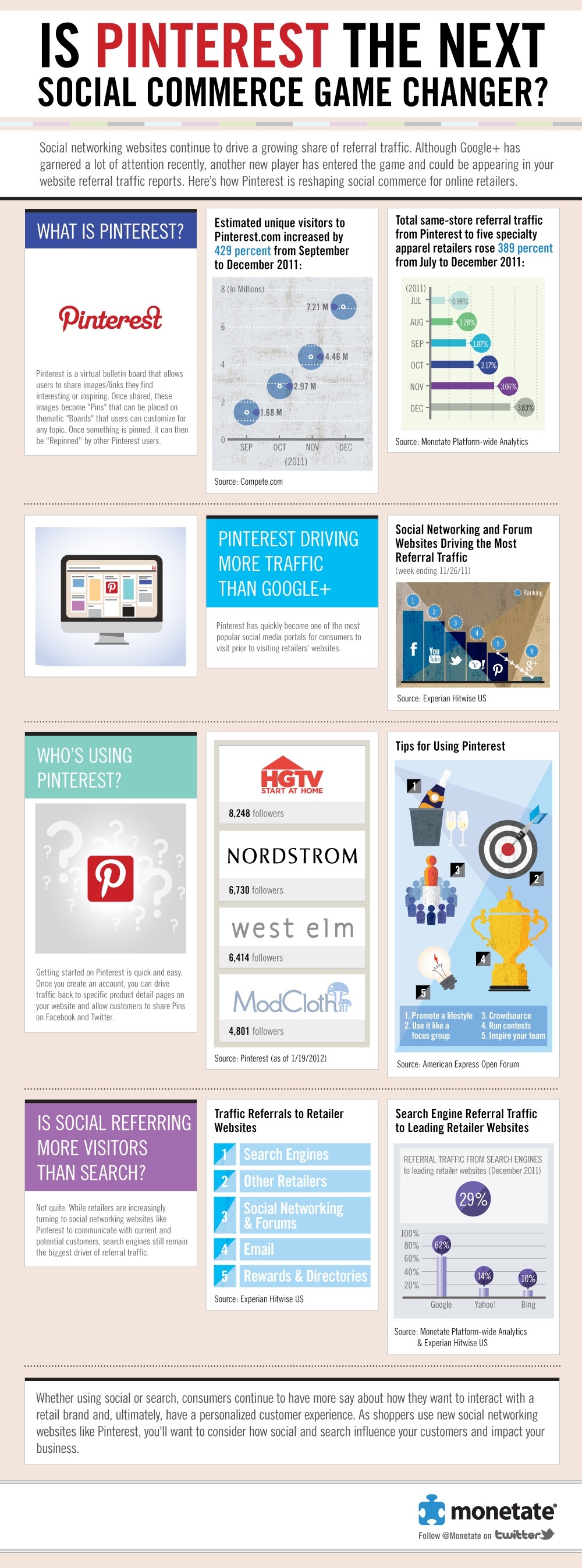Everything You Need To Know About Pinterest
Interest in Pinterest Reaches a Fever Pitch [INFOGRAPHIC]
04/30/2012
Could Pinterest be the silver bullet for retailers on social media? Pinterest is clearly resonating with online consumers in a big way. To put it simply, customers who find a product via Pinterest are more likely to purchase it than those who find the product via other social networks.
SEE ALSO: 10 Video Tips for Businesses on Pinterest
Pinterest is hot. In fact, in March 2012 the site served up 2.3 billion page impressions to over 4 million unique visitors a day.
Who are these people? Why do Pinterest users respond so strongly to products that are pinned? This infographic from Tamba breaks down the stats, explaining why Pinterest is so powerful with its consumption-friendly audience.
SEE ALSO: 10 Video Tips for Businesses on Pinterest
Pinterest is hot. In fact, in March 2012 the site served up 2.3 billion page impressions to over 4 million unique visitors a day.
Who are these people? Why do Pinterest users respond so strongly to products that are pinned? This infographic from Tamba breaks down the stats, explaining why Pinterest is so powerful with its consumption-friendly audience.
What is Pinterest, How it Works & What You Can Do With it
Pinterest lets you organize and share all the beautiful things you find on the web. People use pinboards to plan their weddings, decorate their homes, and organize their favorite recipes.
Best of all, you can browse pinboards created by other people. Browsing pinboards is a fun way to discover new things and get inspiration from people who share your interests. To get started, request an invite.
Best of all, you can browse pinboards created by other people. Browsing pinboards is a fun way to discover new things and get inspiration from people who share your interests. To get started, request an invite.
4 Reasons Pinterest Wins with Women (And Facebook Loses)
04/16/2012
Look out Facebook. A picture is worth a thousand words especially if you are looking to speak to female consumers.
That’s why Pinterest boasted 104 million total visits in March, and is now the third most popular social media platform behind Twitter and Facebook.
Women are almost completely responsible for Pinterest’s success—according to Inside Network’s AppData. In fact, 97 percent of the site’s users are women.
Women trust recommendations from Pinterest more than any other platform, per BlogHer’s annual study on women and social media. Eighty-one trust Pinterest versus Facebook (67 percent) and Twitter (73 percent).
Why? Because women trust other women in their circles more than anyone else. As a result, 47 percent of women bought something based off a recommendation from Pinterest where as only 33 percent bought because of a recommendation on Facebook.
It’s no surprise that brands have been jumping on the Pinterest bandwagon in troves and have seen their followers grow over night. Many products are getting more exposure than they ever could on Facebook and Twitter, and it’s relatively easy to see why.
To sum it up, here are four reasons why Pinterest is superior to Facebook when targeting women:
1. It is simple, clean and fuss free. This makes browsing delightful and easy: two main components to marketing success. Because of Pinterest’s visually appealing layout, consumers just see a picture with very little text. Facebook on the other hand is very word heavy and can turn off potential consumers.
2. Marketers have an open window into consumers’ interests. They can easily see a gold mine of information on potential customers. For example, an interior design marketing team can see who is influential in the ‘home decor’ section. They can then start following and see what trends people are repining and liking.
3. It’s relaxing. Pinterest creates a curated experience for its users in a fairly anonymous way. No constant updating of feeds, no overload of people’s lives. On Pinterest it’s about enjoying your hobbies—not having to like someone’s status or wish anyone a Happy Birthday. It lets users share experiences in a negative-free zone, briefly comment and move on without the weight of Facebook etiquette.
4. Brands have found cool ways to use it. Martha Stewart Living and Kate Spade are pinning like crazy with overwhelming response by adding more than 19,000 and 34,000 followers respectively. Kotex even has bragging rights for hosting one of the first Pinterest campaigns. The brand found 50 “inspiring” women in Israel and looked at what they were pinning on Pinterest. Then, Kotex sent the women a virtual gift. If she pinned the gift, she then got a real one in the mail that was based on something she had pinned. The result: success—nearly 100% of the women pinned and commented on their gifts.
All told, Pinterest has brought women together online in a way never seen before and tapped into an extremely influential consumer market without even trying. In many ways, this makes Pinterest genuinely more appealing than Facebook and far more trendy among women consumers who get the picture.
About the author:
Melissa Pitts is a marketing intern at gyro. She blogs regularly atNewstaco.com, FlamingTortillas.com and Americas Quarterly.
Follow her at @mpittsm
That’s why Pinterest boasted 104 million total visits in March, and is now the third most popular social media platform behind Twitter and Facebook.
Women are almost completely responsible for Pinterest’s success—according to Inside Network’s AppData. In fact, 97 percent of the site’s users are women.
Women trust recommendations from Pinterest more than any other platform, per BlogHer’s annual study on women and social media. Eighty-one trust Pinterest versus Facebook (67 percent) and Twitter (73 percent).
Why? Because women trust other women in their circles more than anyone else. As a result, 47 percent of women bought something based off a recommendation from Pinterest where as only 33 percent bought because of a recommendation on Facebook.
It’s no surprise that brands have been jumping on the Pinterest bandwagon in troves and have seen their followers grow over night. Many products are getting more exposure than they ever could on Facebook and Twitter, and it’s relatively easy to see why.
To sum it up, here are four reasons why Pinterest is superior to Facebook when targeting women:
1. It is simple, clean and fuss free. This makes browsing delightful and easy: two main components to marketing success. Because of Pinterest’s visually appealing layout, consumers just see a picture with very little text. Facebook on the other hand is very word heavy and can turn off potential consumers.
2. Marketers have an open window into consumers’ interests. They can easily see a gold mine of information on potential customers. For example, an interior design marketing team can see who is influential in the ‘home decor’ section. They can then start following and see what trends people are repining and liking.
3. It’s relaxing. Pinterest creates a curated experience for its users in a fairly anonymous way. No constant updating of feeds, no overload of people’s lives. On Pinterest it’s about enjoying your hobbies—not having to like someone’s status or wish anyone a Happy Birthday. It lets users share experiences in a negative-free zone, briefly comment and move on without the weight of Facebook etiquette.
4. Brands have found cool ways to use it. Martha Stewart Living and Kate Spade are pinning like crazy with overwhelming response by adding more than 19,000 and 34,000 followers respectively. Kotex even has bragging rights for hosting one of the first Pinterest campaigns. The brand found 50 “inspiring” women in Israel and looked at what they were pinning on Pinterest. Then, Kotex sent the women a virtual gift. If she pinned the gift, she then got a real one in the mail that was based on something she had pinned. The result: success—nearly 100% of the women pinned and commented on their gifts.
All told, Pinterest has brought women together online in a way never seen before and tapped into an extremely influential consumer market without even trying. In many ways, this makes Pinterest genuinely more appealing than Facebook and far more trendy among women consumers who get the picture.
About the author:
Melissa Pitts is a marketing intern at gyro. She blogs regularly atNewstaco.com, FlamingTortillas.com and Americas Quarterly.
Follow her at @mpittsm
Pinterest Leads Consumers From Pin To Purchase
04/06/2012
online media daily
|
Marketers may soon add Pinterest into their attribution strategy. Studies have demonstrated the social site's ability to generate leads. Now a recent study suggests it prompts consumers to make purchases. Some 21% of respondents to a recent survey with a Pinterest account have purchased a product after seeing a picture on the site.
The PriceGrabber survey of 4,851 U.S. online consumers conducted between March 13 and 26 reveals that respondents who purchased a product based on seeing it strictly on Pinterest were asked to select all items purchased: 33% said food and cooking; 32%, fashion and clothing; 30%, home decorating; and 26%, crafts. Some 37% of Pinterest account holders log in a few times weekly and most have created between two and five Pinboards; 28% said they log in a few times a month; 15%, once daily; 10%, a few times a year; and another 10%, numerous times a day. When Pinterest account holders were asked how many Pinboards they have created, 29% said between two and five; 26%, between six and 10; 19%, none; 16%, one; and 10%, more than 10. Searching for recipes remains the favorite interest. Some 70% of Pinterest account holders cite cooking and recipes as the top item pinned. When respondents with a Pinterest account were asked to select all of the types of items they pin, 70% cited cooking inspiration and recipes; 65%, home decorating; 53%, craft ideas; 41%, fashion and shopping ideas; 34%, entertaining ideas; and 33%, gardening. Even with all this action and multiple surveys chronicling success on Pinterest, there's still a lot of room for growth. Some 58% of consumers do not have a Pinterest account. Some 32% said they are not familiar with Pinterest. Of the respondents who do not have an account, 89% do not plan to sign up for one. Facebook and Twitter remain more popular than Pinterest. Of the survey respondents with a Pinterest account, 98% said they also have a Facebook and/or Twitter account. Of those respondents with a Facebook and/or Twitter account, 77% said they do not log in to Pinterest more than Facebook and/or Twitter; 12% said they log in the same amount, and only 11% log in to Pinterest more. Read more: http://www.mediapost.com/publications/article/171459/pinterest-leads-consumers-from-pin-to-purchase.html#ixzz1rH72kk9N |
How to Make Images Stand Out on Pinterest [INFOGRAPHIC]
mashable
Do you want your Pinterest images to stand out and get repinned? With more than 12 million users posting pictures to the image-based social network, it’s important to make sure images grab the attention of fellow Pinterest users. A properly optimized pin can make all the difference between 50 repins or no repins.
This infographic from Pinnable Business gives you information to optimize every pin you post — it includes best practices for sizing, linking, sharing and repinning.
Give these tips a try and let us know if they make a difference on your Pinterest boards.
This infographic from Pinnable Business gives you information to optimize every pin you post — it includes best practices for sizing, linking, sharing and repinning.
Give these tips a try and let us know if they make a difference on your Pinterest boards.
Why Brand Managers Need to Take an Interest in Pinterest
|
How Pinterest Can Turn Your Brand Red-Hot
|
How to Track Traffic From Pinterest in Google Analytics
03/14/2012
by Jim Gianoglio
It’s hard to ignore Pinterest‘s explosive growth over the past year. In a very short period of time, the social network has gone from relative obscurity to a top 100 site, with 11.7 million unique monthly U.S. visitors.
But how many referrals does Pinterest generate? Are those visits valuable? Do they convert? Are they engaged? How many people use the “pin it” button on a site? Which pictures on a site are the most pinned and repinned?
Here are four ways to measure Pinterest using Google Analytics.
1. Referral Reports
This is an easy way to track how many visits are coming to your site from Pinterest. Go to Traffic Sources > Sources > Referrals Report. From there, if you don’t see pinterest.com (or m.pinterest.com) in your top 10 referrals, search “pinterest” using the inline filter at the top of the table.
It’s hard to ignore Pinterest‘s explosive growth over the past year. In a very short period of time, the social network has gone from relative obscurity to a top 100 site, with 11.7 million unique monthly U.S. visitors.
But how many referrals does Pinterest generate? Are those visits valuable? Do they convert? Are they engaged? How many people use the “pin it” button on a site? Which pictures on a site are the most pinned and repinned?
Here are four ways to measure Pinterest using Google Analytics.
1. Referral Reports
This is an easy way to track how many visits are coming to your site from Pinterest. Go to Traffic Sources > Sources > Referrals Report. From there, if you don’t see pinterest.com (or m.pinterest.com) in your top 10 referrals, search “pinterest” using the inline filter at the top of the table.
|
To make it easier, create an advanced segment that includes only traffic from Pinterest. I’ve already done that for you, just go grab the advanced segment here. From there, you can make your report more interesting by choosing a goal set and using the comparison view, as shown on the right. |
As long as you have some goals set up in your analytics, this report will let you view how visits from Pinterest compare to the site average. For instance, is the goal completion rate for Pinterest visits higher or lower than the site average goal completion rate?
If you have an ecommerce site (and have ecommerce tracking enabled in Google Analytics), find out whether Pinterest visitors are more likely to purchase, and whether their average order values are higher or lower than other sources of traffic. To do this, just click on the Ecommerce tab (instead of the Goal Set tab) and select one of the ecommerce metrics (revenue, transactions, average value, ecommerce conversion rate or per visit value).
2. Custom Reports
Another way to focus your analysis on Pinterest is to use custom reports. Custom reports let you mash up just the specific information you want to see. For example, this custom report will show the pages (i.e. pins) on Pinterest that sent visits, how many visitors came from each page, whether they’ve been to your site before, how many pages they looked at, how long they stayed, whether they bounced (saw one page and left), whether they completed a goal, and the average value of each visit (based on ecommerce revenue). Pin that!
If you have an ecommerce site (and have ecommerce tracking enabled in Google Analytics), find out whether Pinterest visitors are more likely to purchase, and whether their average order values are higher or lower than other sources of traffic. To do this, just click on the Ecommerce tab (instead of the Goal Set tab) and select one of the ecommerce metrics (revenue, transactions, average value, ecommerce conversion rate or per visit value).
2. Custom Reports
Another way to focus your analysis on Pinterest is to use custom reports. Custom reports let you mash up just the specific information you want to see. For example, this custom report will show the pages (i.e. pins) on Pinterest that sent visits, how many visitors came from each page, whether they’ve been to your site before, how many pages they looked at, how long they stayed, whether they bounced (saw one page and left), whether they completed a goal, and the average value of each visit (based on ecommerce revenue). Pin that!
|
3. Dashboards
Dashboards in Google Analytics provide high-level, end-to-end views of your site activities. You can add all the information you need to see on a regular basis just by adding widgets to your dashboard. When tracking Pinterest, monitor several key areas: daily visits from Pinterest, how many of those visits originate on mobile devices, how long users stay and how many pages they look at, your most popular content, and whether pinners are completing your goals and buying your products. Dashboards help you keep close tabs on whether your efforts on Pinterest are paying off or falling flat. It can also help you determine which products resonate with the Pinterest demographic, so you can strategize future pin content. The dashboard below (which you can get a copy of here) displays all this info and more. |
|
4. Multi-Channel Funnels
If you’re judging whether Pinterest visits convert (e.g., complete a goal, make a purchase), be careful. The standard reports in Google Analytics use last click attribution, meaning Pinterest will only get credit for the conversion if it is the last source of the visit that converts. In layman’s terms, if I first come to your site from Pinterest, then come back later through an organic search and make a purchase, that purchase gets credited to the organic search. Poor Pinterest gets left out in the cold. But we can do better. To get a more complete picture of how many conversions can be fully (or partially) attributed to Pinterest, look at the Multi-Channel Funnels reports in Google Analtyics. First, take a look at the Assisted Conversions report. Select Source/Medium as the primary dimension, and filter for Pinterest (see image below). |
|
This will tell you how many times Pinterest assisted with a conversion (it wasn’t the last source before a conversion), and how many times it was the last source before a conversion. It may be that Pinterest primarily drives awareness of your brand/product/site, but people come back later to convert.
Next, to see how Pinterest and other sources of traffic mingle before that final conversion, go to the Top Conversion Paths report (see above). Again, select Source/Medium Path as the primary dimension and filter for Pinterest. Now, you can see cases in which Pinterest drove traffic, users who returned sometime later and converted. How are you measuring Pinterest? Share your strategies in the comments! Jim Gianoglio is the manager of insight: social & mobile at Lunametrics, a Google Analytics certified partner that also specializes in social media, SEO, and PPC. You can follow him on Twitter @LunaMetrics or @jgianoglio. |
How Brands Are Using Promotions to Market on PinterestClick on the image to read the whole article. Pinterest’s traffic and engagement are spiking, and marketers want a piece of the action. After launching branded profiles, many businesses are now developing promotions on the platform, encouraging users to follow the profiles of individual brands and pin items from their websites. Most recently, British Midland International (bmi) launched a “Pinterest Lottery.” The airline has posted a series of boards on its Pinterest page, featuring numbered and logo-clad photos from five destinations: Beirut, Dublin, Marrakech, Moscow and Nice. Users are asked to repin up to six images. At the end of each week, the company will choose a number at random; the users who had repinned the image with that number will be qualified for a chance to win a pair of free return flights to any bmi destination. In December, Lands’ End Canvas launched a promotion called “Lands’ End Canvas Pin It to Win It.” Fans of the apparel brand were asked to pin items from landsendcanvas.com to designated Lands’ End Canvas pinboards for a chance to win one of those items. How To Add A Pinterest Button To Your Site And Get Astronomical Amounts Of Traffic
|
Pinterest Drives More Traffic to Blogs Than TwitterPinterest drove more traffic to online publishers in February than Twitter, according to third-party measurement data.
That’s an impressive figure, given that the two-year-old site has an estimated 11.7 million active registered users compared to Twitter’s more than 100 million. The data was provided by Shareholic, whose sharing widgets are used across more than 200,000 online publishers, mostly independent bloggers. Between them, those publishers reac_h some 270 million unique visitors every month. In February, the company found that a little less than half (48.81%) of all traffic came from Google, followed by Facebook (6.38%), Yahoo (1.61%), StumbleUpon (1.29%) and Bing (1.21%). Pinterest came in sixth at 1.05%, beating out Twitter at 0.82%. In January, Shareholic found that Pinterest sent more referral traffic to publishers than Google+, YouTube and LinkedIn combined, falling into line just behind Twitter. Women’s lifestyle, home decor and cooking magazineshave been among the biggest beneficiaries of Pinterest’s growth. Some are seeing bigger referral numbers from the image-collecting service than from major portals like Facebook and Yahoo. Content from magazine websites and blogs — particularly those that focus on home decor, arts and crafts, style and food — are among the most frequently “pinned” subjects on Pinterest. Thus it’s no surprise that those two parties are among the first to report significant traffic growth from the site. Pinterest Stats
|
What People Are Pinning on PinterestHome, Arts and Crafts, and Style/Fash_ion are the most popular categories on Pinterest, a third-party study released Monday indicates.
According to business intelligence firm RJ Metrics, 17.2% of all pinboards are categorized under Home, followed by Arts and Crafts (12.4%), Style/Fashion (11.7%), Food (10.5%) and Inspiration/Education (9.0%). Of those, food is the fastest-growing category. It’s also the category that gets the most repins, generating on average more than 50% repins than the second most reshared category, Style and Fashion. The results were drawn across a sample of approximately 1 million pins across 9,200 different users. The study also identified the most popular board names on Pinterest. More than 3% of all boards are titled “For the Home,” followed by “My Style,” (1.97%), “Products I Love” (1.86%), “Books Worth Reading” (1.68%) and “Food” (1.23%). Interestingly, pinboards about products tend to generate the most “likes” from users. Among the other findings, some of which were published last month:
Pinterest Drives More Traffic Than Google+, YouTube & LinkedIn_...
|
Pinterest Is Top Traffic Driver For RetailersPinterest, a two-year-old social bookmarking site that lets users collect and share things they like on the web, is driving increasingly significant amounts of traffic to retailers’ websites.
The service enables users to create online bulletin boards, or “pinboards,” for popular categories such as home decor, food and wedding inspiration. Members can use Pinterest’s “Pin It” bookmarklet tool and iPhone app to save things they see online and offline, and explore and repin the images their friends collect via their personal newsfeeds. The website is especially popular among women, who account for 58% of Pinterest’s traffic, according to Experian Hitwise. he site’s popularity is quickly growing. Pinterest’s traffic increased more than fourfold between September 2011 and December 2011, bringing in 7.51 million unique visitors in December alone, data from Compete indicates. The amount of traffic Pinterest sent elsewhere has risen accordingly, becoming a top five referrer for several apparel retailers, according to internal data from Monetate, which provided the infographic below. Although Pinterest is becoming a significant source of traffic for retailers, search still dominates, and the site has yet to prove itself as a potential sales channel. click the image to read more |
How To Use Pinterest For Business
How To Use Pinterest To Drive Traffic To Your Website
Did you know Pinterest is generating more referral traffic to websites/blogs than YouTube, Google +, and LinkedIn combined? It is no question that marketers are increasingly turning to Pinterest to generate traffic to their sites and find new customers. This infographic from The Social Marketer explains how to use Pinterest as a marketing tool to promote your website/blog.
| ||||||

